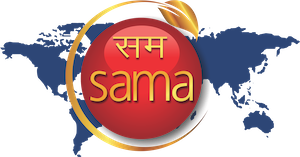The traditional Indian medical system of Ayurveda has its origins in the vedic sciences of the antic high Indian culture. Through a strict oral tradition that dates back some 5,000 years, it has endowed humanity with a highly developed system of knowledge, the veda, that covers various aspects and dimensions of the cosmos.
The massive traditional literature of Ayurveda has developed over the centuries, a good part of it is still intact today. After a long oral transmission, the first major medical treatises, now generally held to be the basic works, are thought to have been written in Sanskrit around the beginning of the Christian era. The first two, caraka saṃhitā and suṣruta saṃhitā about 2,500 years ago, and their compilation, aṣṭāṅga saṅgraha, as well as the summary of its essence, aṣṭāṅga hṛdayam, some centuries later. Together, they are the foundation for studies in ayurvedic medicine in India. In recent decades they have been translated into English and gradually into various other languages (> bibliography).
Despite being challenged and at times repressed under the repeated invasions and colonization in India’s history, Ayurveda has never lost its substance.
The oral transmission and the reference works are of such high quality that the essence and the basic principles have been preserved. India’s Independence saw a renewal of Ayurveda’s institutionalization, however along western lines. It then followed twin tracks, the traditional and the modern. The largest professional association of traditional doctors, the All India Ayurveda Congress, has 300,000 members. Starting in the 1980s, Ayurvedic doctors trained at modern universities have been grouped under the AMAI, the Ayurveda Medical Association of India.
In 2010, the government of India estimated that 70% of India’s population (the latter accounting for one-sixth of the people in the world) uses Ayurveda. Medical faculties award the BAMS (Bachelor of Ayurvedic Medicine and Surgery) after two years of pre-university study in natural sciences and 5½ years of university training in Ayurveda and basics of modern medicine. These studies can be completed in 3 years for a Master’s degree (MD), and after a further 2 years of research and teaching for a doctorate (PhD).
Various other nations culturally closely related to India — Sri Lanka, Nepal, Indonesia and Mauritius — officially recognize Ayurveda as a medical system.
In the West, after a 1980-2000 early pioneer phase, with Ayurveda being introduced by such figures as Maharishi Mahesh Yogi and Sri Sri Ravi Shankar, it began to evolve in the domain of wellness, featuring particularly in the tourism and spa sectors. There were few Indian ayurvedic doctors teaching Ayurveda in Europe before 2000. But as the new millennium dawned, ayurvedic doctors came to teach at a variety of professional institutions in Europe and the USA.
Ayurveda has gained in stature ever since, not just as a preventive medicine but also through the clinical results of its curative aspect. It attracts particular interest by virtue of its respect for the environment and its educational potential. This development is constantly encouraged by the Indian government, which is always prepared to support the efforts of international ayurvedic representatives in promoting Ayurveda the world over.
